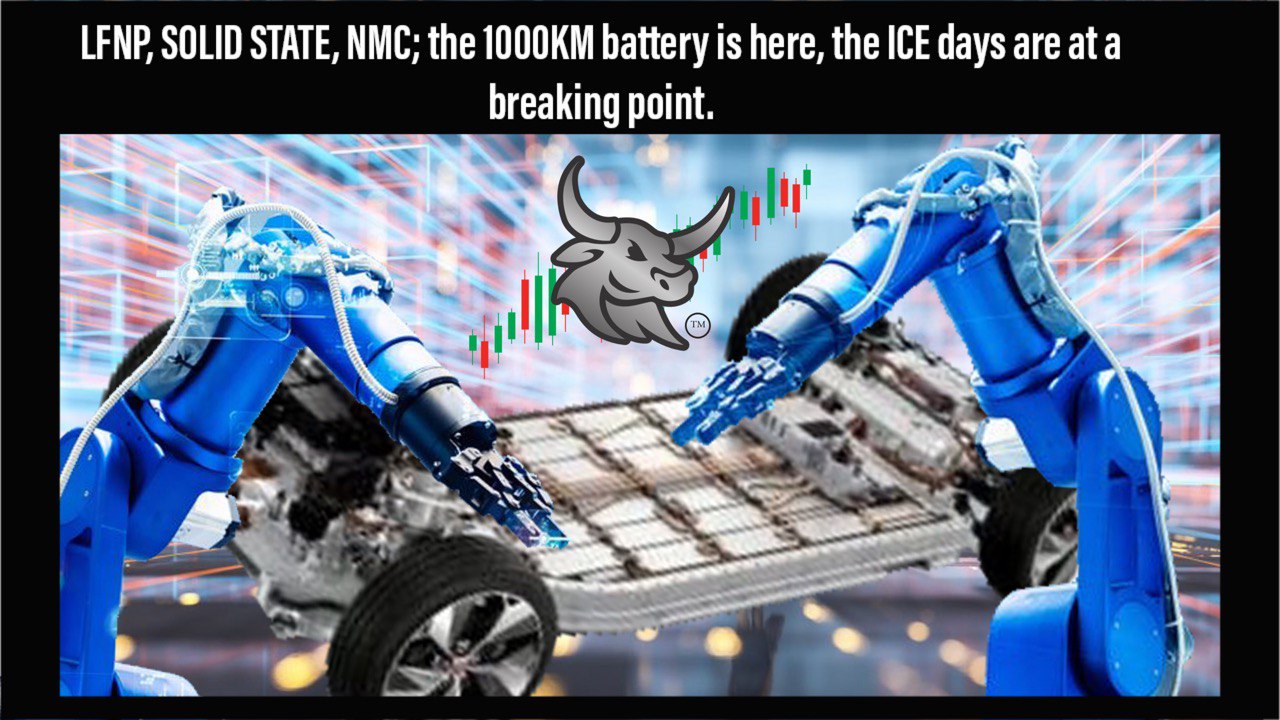In today’s rapidly evolving automotive landscape, the shift towards sustainable transportation solutions has reached a pivotal moment. With the rise of electric vehicles (EVs) and groundbreaking advancements in battery technology, industry leaders are reshaping the future of mobility. Two prominent players in this transformation are IM Motors and Gotion High-Tech, alongside established automotive giants like BYD, each making significant strides towards a cleaner, more efficient transportation ecosystem.
IM Motors’ IM L6: Pioneering the Electric Vehicle Experience
IM Motors, a subsidiary of SAIC Motor Corp, has emerged as a frontrunner in the electric vehicle race with the introduction of its highly anticipated IM L6. This groundbreaking vehicle showcases a 1,000 km range powered by a revolutionary 130 kWh semi-solid-state battery named “Lightyear.” The battery’s ultra-fast charging capabilities and innovative design signify a significant leap forward in EV technology, addressing key concerns such as range anxiety and charging infrastructure limitations.Beyond its impressive battery performance, the IM L6 boasts cutting-edge features and technologies, including advanced driver assistance systems (ADAS), multi-angle Carlog, and City Drive. These innovations redefine the driving experience, offering a seamless blend of luxury, convenience, and sustainability.
Subscribe to our newsletter!
Gotion High-Tech’s Astroinno Battery: Redefining Energy Storage
Gotion High-Tech, backed by Volkswagen, is revolutionizing battery technology with its Astroinno battery. This iron-based solution utilizes a manganese-based cathode, offering a more than 1,000 km range on a single charge without relying on expensive materials like cobalt and nickel. With a cell-level energy density of 240 Wh/kg and rapid charging capabilities, the Astroinno battery sets a new standard for efficiency and affordability in EV powertrains.The development of the Astroinno battery aligns with Volkswagen’s commitment to sustainability and electrification, positioning Gotion High-Tech as a key player in the global transition to electric mobility.
Why Settle for anything less! Click the Image to Learn More! Brunswick Exploration, Tickers: $BRW.V $BRWXF

BYD’s Next-Generation Blade Battery: A Game-Changer in Range
Adding to the excitement in the electric vehicle (EV) industry, Chinese automotive giant BYD is set to launch its next-generation Blade battery in August, promising significant range gains over its current power packs. Reports indicate that BYD’s EV battery subsidiary, FinDreams, has developed the new Blade pack to be approximately 25 percent more efficient than the brand’s existing lithium iron phosphate (LFP) batteries.At present, BYD’s first-generation Blade battery, found in models such as the Atto 3 SUV, Dolphin hatchback, and Seal sedan, boasts an energy density of 150 Wh/kg. However, the new Blade battery is expected to raise the bar with an energy density of 190 Wh/kg. This improvement allows for fewer battery cells to be used to achieve the same driving range or provides greater range without changing the pack size.The implications of this advancement are profound. Speculations suggest that certain EVs equipped with the new Blade battery could achieve an impressive 1,000 km of driving range on the CLTC cycle, similar to solid and semi-solid state batteries being developed by Chinese rivals IM Motors and Nio. Importantly, BYD’s solution aims to achieve this feat at a lower cost, potentially democratizing long-range electric mobility.In BYD’s current lineup of Blade-powered models, the battery serves as an integrated part of the chassis, contributing to the structural integrity of the vehicle while also optimizing weight distribution for improved handling.

NEW: Betweenplays “Players Dugout“, Our very own Stockmarket, Crypto Chatroom! Click on image!
Stay Tuned as we prepare for the release of our App. created by our new team of coders out of Silicon Valley, we plan on being the next success story!
Addressing Range Anxiety: Enhancing Everyday Mobility
With EV ranges surpassing 1,000 km, consumers are no longer burdened by range anxiety, opening up new possibilities for everyday mobility. According to statistics, the average daily commute in the United States is approximately 32 miles roundtrip, while the average annual mileage for American drivers is around 13,500 miles. Similarly, in other developed countries, daily commuting distances fall within a similar range.However, countries like Canada are exceptions to this rule, with vast territories and large distances between major cities. The sheer size of Canada means that traveling from one major city to another often requires covering considerable distances. Yet, even in countries like Canada, the adoption of EVs with 1,000 km ranges eliminates the issue of range anxiety, making electric mobility a viable option for consumers across diverse landscapes.
The Next Major Hurdle: The Energy Grid Conundrum
While the elimination of range anxiety represents a significant milestone in the adoption of electric vehicles, the next major hurdle lies in the capacity of national energy grids to support widespread EV charging. With an increasing number of consumers opting for EVs and relying on home charging solutions, pressure on existing energy infrastructure is mounting.In this context, the question arises: Can our power grids handle this new era of home plug-ins? The demand for electricity to power EVs poses a significant challenge to energy providers, requiring investments in grid modernization and infrastructure upgrades to accommodate the growing needs of EV owners.
The Catch 22 lies in nuclear power plants, is this the solution to the challenge that awaits us
Nuclear energy offers a reliable and low-carbon option for generating electricity, providing a scalable solution to meet the energy demands associated with the widespread adoption of electric vehicles. By leveraging nuclear power, countries can bolster their energy grids and ensure a reliable supply of electricity to support the transition to electric mobility.

Nuclear power plants have the capacity to generate large amounts of electricity consistently, without producing greenhouse gas emissions, making them a viable option for meeting the growing energy demands of an electrified transportation sector.
In conclusion
As the electric revolution continues to unfold, the advancements in battery technology and the widespread adoption of electric vehicles signal a transformative shift in transportation. With companies like IM Motors, Gotion High-Tech, and BYD leading the charge, the future of mobility is electric, efficient, and sustainable. However, the journey towards a fully electrified transportation ecosystem is not without its challenges. Addressing the energy grid conundrum and embracing nuclear power as a viable energy solution will be essential steps in realizing the full potential of electric mobility. Stay tuned for our next article as we delve deeper into the nuclear power conundrum and its implications for the future of energy and transportation.


